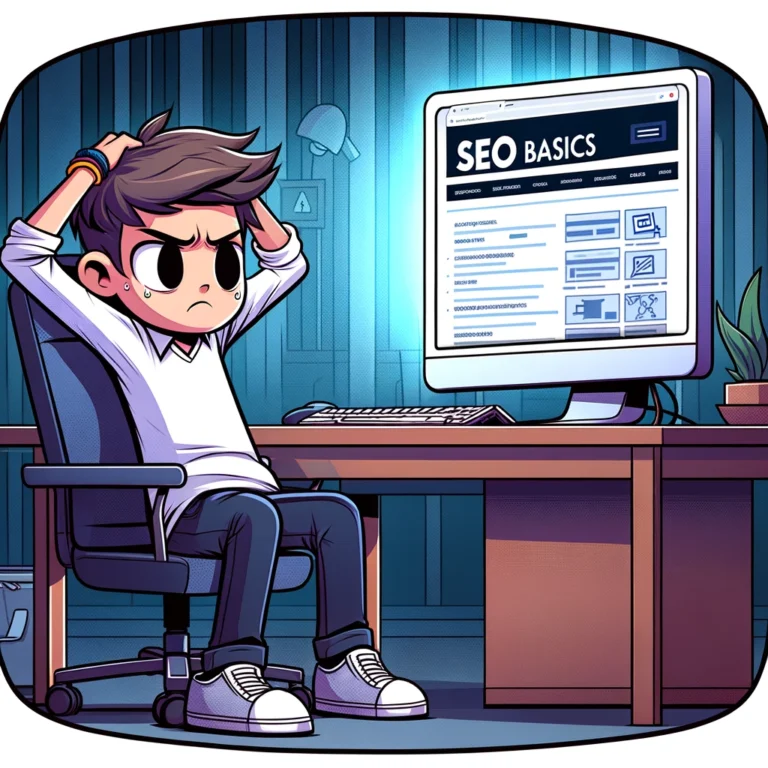Search engine optimization (SEO) is an essential part of digital marketing. It involves enhancing your website to increase its visibility when people search for products or services related to your business in search engines like Google. The ultimate goal is to drive more traffic to your site, which can lead to more conversions and, ultimately, increased revenue.
However, not all SEO techniques are created equal. There are fundamentally two approaches to SEO: white hat and black hat. Understanding the differences between these can not only help you choose the right strategies for your website but also ensure that your SEO efforts lead to sustainable growth.
What is White Hat SEO?
White hat SEO refers to the use of optimization strategies, techniques, and tactics that focus on a human audience opposed to search engines and completely follow search engine rules and policies. This approach to SEO focuses on providing more value to users and abiding by the guidelines set by search engines. The goal of white hat SEO is to improve search engine rankings on a search engine results page (SERP) while maintaining the integrity of your website and staying within the boundaries of what the search engines deem acceptable.
Key Techniques of White Hat SEO
- Quality Content: Creating high-quality and relevant content is at the heart of white hat SEO. Content should provide real value to users and should be created first and foremost for them and not just to rank well in search engines.
- Keyword Research and Use: Effective white hat SEO involves researching and utilizing keywords that are relevant to the audience’s interests and search behaviors. These keywords should be naturally integrated into the content, titles, meta descriptions, and URLs.
- Backlink Building: Earning backlinks from reputable sites is another white hat technique. This involves creating content that is worthy of being cited by others and engaging in outreach to gain visibility.
- Site Optimization: Improving site performance, such as loading speeds, mobile responsiveness, and user-friendly navigation, is crucial. This not only enhances the user experience but also improves search engine rankings.
- Use of Structured Data: Implementing structured data (schema markup) helps search engines understand the content of your site, potentially leading to better indexing and enhanced search result features.
What is Black Hat SEO?
In contrast, black hat SEO refers to aggressive SEO strategies, techniques, and tactics that focus only on search engines and not a human audience, and does not obey search engine guidelines. While these practices can offer quick gains in terms of rankings, they are risky and can lead to your site being penalized or banned by search engines.
Key Techniques of Black Hat SEO
- Keyword Stuffing: Overloading webpages with keywords in an unnatural way, hoping to manipulate a site’s ranking, is a common black hat tactic that can lead to penalties.
- Cloaking: This involves showing different content to search engines than to users. This deceptive tactic is used to make content rank for a variety of terms irrelevant to the actual content.
- Doorway Pages: These are low-quality pages created solely for ranking highly for specific keywords. They often provide little to no value to visitors and serve merely as a gateway to redirect them to other pages.
- Link Schemes: Any form of buying links in order to boost ranking can be considered a black hat SEO tactic. This includes the use of private link networks designed solely for link building.
- Content Automation: Using software to generate content automatically without regard for quality or relevance is another black hat technique.
Choosing the Right Path
While black hat SEO might seem tempting due to the promise of quick results, these results are typically short-lived and can come with severe penalties. Conversely, white hat SEO, although slower to produce results, creates lasting growth and stability for your website’s presence in search engines.
In SEO, the line between white hat and black hat techniques can sometimes seem blurred, but understanding the difference is crucial for anyone looking to improve their online visibility sustainably. Focusing on white hat strategies, though potentially slower at generating results, builds a solid foundation for your website and can provide long-term success without the risks associated with black hat tactics.

The Impact of SEO Techniques on Your Website’s Health
The approach you take with SEO not only influences your search engine rankings but also affects the overall health and long-term viability of your website. White hat SEO nurtures your site’s health by ensuring a good user experience and steady growth in organic search results. On the other hand, black hat SEO can damage your reputation with both users and search engines.
Long-term Benefits of White Hat SEO
- Trust and Credibility: Adhering to white hat techniques helps build trust with your audience and search engines. When users see that a website consistently provides valuable content and a good user experience, they are more likely to return.
- Sustainability: Techniques that focus on quality and user experience tend to deliver more durable and long-lasting results in rankings. Search engines frequently update their algorithms to reward such practices.
- Lower Risk of Penalties: By following the guidelines set by search engines, your website is less likely to suffer from the setbacks of algorithm updates, which often target black hat practices.
Risks Associated with Black Hat SEO
- Penalties and Bans: Utilizing black hat techniques can lead to severe penalties, including significant drops in ranking or even complete removal from search engine indexes.
- Damage to Reputation: If users notice manipulative tactics, it can damage the credibility of the website. Trust, once lost, is challenging to regain.
- Short-lived Success: The gains from black hat SEO are usually short-term. With every new algorithm update, search engines become smarter in detecting manipulative tactics and penalizing them.
Ethical SEO and Its Importance
Ethical SEO involves implementing strategies that respect search engine guidelines and focus on human users. It is essentially synonymous with white hat SEO. This practice is crucial because it ensures the long-term success of SEO efforts without compromising ethical standards or risking penalties.
Components of Ethical SEO
- Transparency: Being honest about your methods with clients and stakeholders. This includes realistic expectations about the outcomes of SEO strategies.
- Accountability: Taking responsibility for the strategies employed and their impact on the client’s websites and their audience.
- Fairness: Avoiding techniques that manipulate search results at the expense of competitors or the user’s experience.
White Hat SEO in Practice
To implement white hat SEO effectively, consider these practical steps:
Comprehensive Keyword Research
Begin with detailed keyword research to understand what your audience is searching for. Tools like Google Keyword Planner or Ahrefs can help identify relevant keywords that are aligned with user intent.
Content is King
Focus on creating content that is informative, engaging, and valuable. Use formats that resonate with your audience, such as blog posts, infographics, or videos. Ensure that all content is well-researched and fact-checked.
Optimize for User Experience
Enhance the usability of your website. Ensure that it is mobile-friendly, loads quickly, and is easy to navigate. A positive user experience increases the likelihood of visitors returning and sharing your content.
Earn Backlinks Ethically
Instead of purchasing backlinks, earn them by creating high-quality content that others want to link to. Engage with your niche community through blogs, forums, and social media to increase your visibility and link-worthiness.
Regularly Update Your SEO Practices
SEO is an ever-evolving field. Regular updates to your SEO strategy are necessary to adapt to changes in search engine algorithms and shifts in user behavior.
Conclusion
Choosing between white hat and black hat SEO is about more than just ethics; it’s about strategy and sustainability. While black hat SEO might offer a quick fix, it comes with high risks that can ultimately harm your website and its reputation. White hat SEO, while more gradual, ensures steady growth, enhances user experience, and maintains your site’s integrity. By committing to white hat SEO practices, you ensure that your SEO efforts are beneficial not only for your search engine rankings but also for your overall online presence.
Frequently Asked Questions About Black Hat Versus White Hat SEO
White hat SEO focuses on improving user experience and adhering to search engine guidelines, aiming for long-term success. Techniques include creating high-quality, relevant content, using keywords appropriately, and building legitimate backlinks. This approach enhances a website’s SERP position ethically and sustainably.
Conversely, black hat SEO seeks to exploit loopholes in search engine algorithms to gain higher rankings quickly and often unethically. Techniques such as keyword stuffing, cloaking, using hidden text, and spammy link building are commonly employed. While these methods can provide short-term gains in rankings, they risk severe penalties, including site bans.
Choosing white hat SEO ensures compliance with search engine standards and fosters trust and loyalty among users. Black hat SEO, while tempting for quick results, risks both your reputation and your website’s visibility in the long run. Practicing white hat SEO is essential for building a sustainable and successful online presence.
and algorithms of search engines, which are designed to prioritize the user experience. This approach ensures that improvements in SEO rankings are sustainable and not subject to the fluctuations associated with the algorithm updates targeting black hat practices.
Employing white hat strategies like producing quality content, enhancing site usability, and conducting ethical link building leads to a gradual but steady increase in rankings, traffic, and, importantly, conversion rates. This not only helps in building a loyal audience base but also enhances the brand’s reputation and credibility in the digital space.
On the other hand, black hat SEO might achieve quick results, but these are inherently unstable and risky. With search engines continuously updating their algorithms to penalize unethical practices, any short-term gains are likely to result in long-term losses, including potential blacklisting of the site.
Yes, a website can recover from penalties associated with black hat SEO techniques, but the process is often challenging and time-consuming. Recovery starts with a thorough audit to identify all the black hat tactics used on the site. This includes checking for suspicious backlinks, hidden content, keyword stuffing, and any deceptive practices that could have triggered the penalty.
Once identified, these issues must be addressed systematically. This involves removing or disavowing toxic backlinks, revising content to eliminate keyword stuffing, making hidden text visible or removing it, and stopping any cloaking practices. After cleaning up the site, you must submit a reconsideration request to search engines explaining the changes and actions taken to remedy the violations.
Recovery is not immediate, and during this period, it’s crucial to start employing white hat SEO techniques to slowly rebuild the site’s credibility and ranking. Consistent effort and patience are key, as it can take months or even longer for a site to regain its former standing in search results.
Black hat SEO significantly degrades the user experience as it prioritizes search engine manipulation over user satisfaction. Techniques like cloaking and misleading redirects can frustrate users by providing them with content that does not match their search intent. This can lead to increased bounce rates as users leave the site quickly, dissatisfied with the irrelevant or deceptive content.
Keyword stuffing makes content difficult to read and often nonsensical, diminishing the overall quality of information the site provides. Additionally, invasive pop-ups and excessive ads, which are sometimes used in black hat strategies to maximize clicks, further detract from the user experience, making the site cumbersome and annoying to navigate.
This poor user experience not only affects immediate engagement but can also harm a website’s reputation long-term. Users are less likely to return to or recommend a site that used deceptive practices, leading to a decline in repeat traffic and potential new customer referrals.
Mixing white hat and black hat SEO techniques, often referred to as “gray hat” SEO, carries significant risks and can undermine the long-term success of your digital marketing efforts. While it might be tempting to blend both to capitalize on the quick gains from black hat techniques while maintaining some level of ethics, this approach is fraught with danger.
The primary risk is that even minor black hat tactics can lead to penalties as search engines’ algorithms become more sophisticated at detecting unethical practices. These penalties can range from a drop in rankings to complete removal from search results, negating any previous gains achieved through white hat strategies.
Moreover, using gray hat SEO can damage a website’s reputation. Today’s digital consumers are savvy and value transparency and authenticity. They can often recognize when a site is trying to manipulate them, which can lead to decreased trust and loyalty.
In summary, while purely white hat SEO requires more time and patience, it guarantees a safer, more reliable path to improved search engine rankings and helps build a trustworthy online presence. Mixing strategies not only jeopardizes this but also risks the stability and reputation of the website in the long term.
Identifying black hat SEO techniques can be crucial for both webmasters looking to clean up their own sites and users trying to avoid less reputable pages. Common indicators include:
Unnatural spikes in traffic that do not correlate with recent content updates or marketing efforts. This could be the result of purchased traffic, which is often of low quality and engagement.
Overuse of exact-match keywords in the content, titles, and meta tags. This practice, known as keyword stuffing, makes content difficult to read and is flagged by search engines as manipulative.
Invisible text or links that are hidden from users but visible to search engines, often used to manipulate SEO rankings by including irrelevant keywords.
Cloaking or redirecting users to different pages than those indexed by search engines, providing a different experience to users than what was expected.
An unnatural number of backlinks from irrelevant or low-quality sites. This could indicate a purchased link network aimed at artificially boosting the site’s link profile.
Recognizing these tactics can help maintain the integrity of your SEO strategy and avoid penalties from search engines.
Ensuring that your SEO strategy remains purely white hat involves several proactive steps:
Stay informed about SEO guidelines: Regularly review the guidelines provided by major search engines like Google. This ensures you stay updated on what is considered ethical and effective.
Focus on quality content: Make the creation of high-quality, relevant content your priority. Content should be designed to provide value to users, not just to rank well.
Engage in legitimate link building: Instead of buying links, focus on earning them through genuine relationships, quality content, and active participation in relevant online communities.
Regular audits: Perform regular SEO audits to check for any practices that might inadvertently slip into gray or black hat territory. This includes checking for over-optimized content, scrutinizing your link profile, and ensuring all SEO tactics align with guidelines.
Continuous learning: SEO is an evolving field. Continuously educate yourself and your team on the latest best practices and ethical techniques.
By following these steps, you can build a robust SEO strategy that enhances your website’s visibility and credibility without risking penalties.
If you suspect a competitor is using black hat SEO techniques, there are a few steps you can take:
Document the evidence: Collect as much information as possible about the suspected black hat practices, such as screenshots, links, and descriptions of what you observe.
Report to search engines: Major search engines like Google allow you to report webspam or manipulative practices. Utilizing their reporting tools can help alert them to investigate the matter.
Focus on strengthening your own SEO: Instead of getting overly involved in a competitor’s tactics, invest that energy into enhancing your white hat SEO practices. This ensures you remain competitive and maintain a clean profile.
Monitor the impact: Keep an eye on how these practices might be affecting your own site’s performance or the general market. Adjust your strategies accordingly to ensure you remain on top.
While you cannot control the actions of others, focusing on your ethical SEO strategies and reporting violations can help maintain a fair competitive environment.
Yes, there are several tools available that can help identify potential black hat SEO techniques used on a website:
Google Search Console: Provides tools to help you monitor and troubleshoot your site’s presence in Google Search results. It can alert you to potential penalties and suspicious activities.
Ahrefs: Offers tools to analyze your backlink profile and help you spot sudden spikes in backlinks or the presence of links from potentially harmful sites.
SEMrush: Another comprehensive tool that includes features for auditing your site for over-optimization and issues that could be considered spammy by search engines.
Moz Pro: Provides features for checking for keyword stuffing and other potential black hat indicators on your site.
Siteliner: Useful for detecting duplicate content, which can sometimes be an indicator of spammy or manipulative content practices.
These tools can be instrumental in maintaining a clean SEO strategy and monitoring any suspicious activities either on your own site or competitors’.
Search engine algorithm updates are designed to improve the way search engines find, rank, and return the most relevant and high-quality results to users. These updates can significantly impact both white hat and black hat SEO strategies but in different ways:
White Hat SEO: Sites using white hat techniques are generally positively impacted or unaffected by updates. Since these updates often aim to reward high-quality content and penalize manipulative practices, white hat sites might see improvements in their rankings as poor-quality sites are demoted.
Black Hat SEO: Sites employing black hat techniques are often negatively impacted by updates. For example, Google’s Penguin update targeted sites with spammy link profiles, and its Panda update penalized sites with low-quality content. Websites using these techniques may experience drops in rankings or even removal from search results.
Understanding and preparing for these updates can help ensure that your SEO strategies remain effective and your site’s ranking stays stable.



